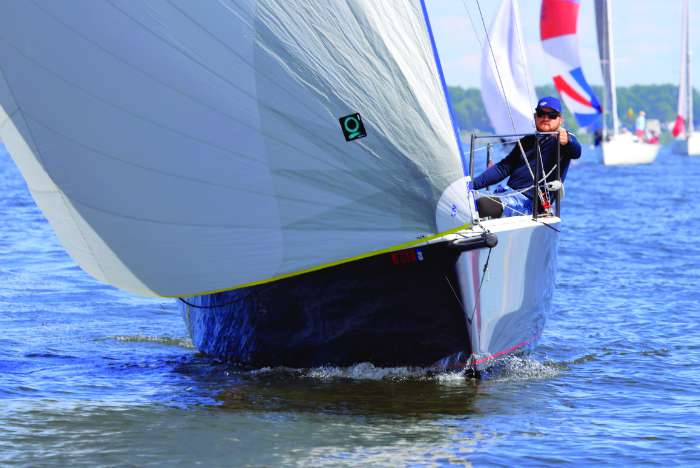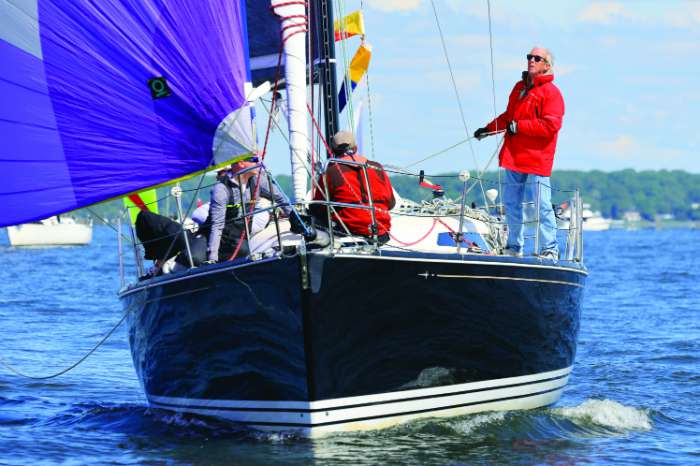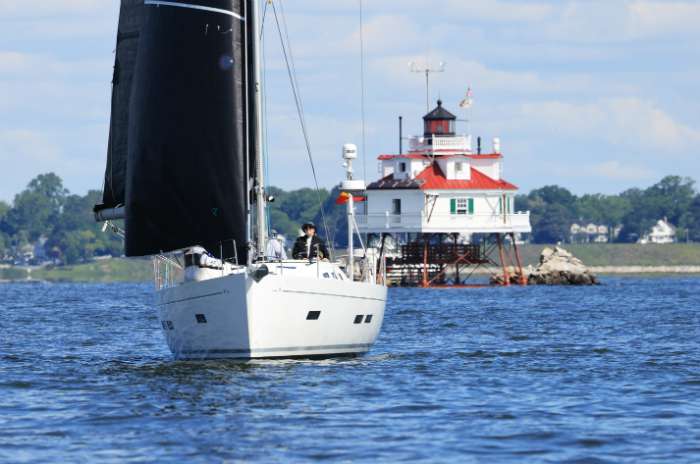How Sailboat Racers Can Practice Patience as a Winning Strategy
Sailboat racing is a sport that demands quick and decisive decision making and action. However, it is also chess-like in movements and often requires a more thoughtful approach and a measure of patience. We Type A personalities often struggle with this aspect of the sport. Here in no particular order are some moments on the racecourse that demand patience.

Light-air strategy
The board is moving slowly, and the effects of positioning on the racecourse take time to develop. Also, in light air the classical tactical doctrine of sticking to the middle of the racecourse is less applicable. In all probability we will need to seek out the edges of the racecourse. This means taking risks. It also means there will be a lot of separation in the fleet.
Once you have made your commitment, there is no way short of a transporter beam (something I have wished for on many occasions) magically transporting your boat to the other side of the course. The boats over there may look great, but you have to be patient and stick to your guns. In the crap shoot that is light-air racing the pendulum will swing many times. Good things come to those who wait. Remember it is the last puff or shift that counts.
Splitting for the sake of splitting
It is easy to get frustrated and impatient when you are behind. This is a tough sport. You are going to get off on the wrong foot and miss the first puff or shift many times. The panic reaction is to rationalize that I am behind, so I just need to do something different. The leaders are going right; I am going left and probably all the way to the corner. This is a surefire way to lose big.
Take the early losses. Be patient and continue to do the right thing. Stay on the lifted (upwind) or headed (downwind) tack. Sail the tack that takes you more towards the mark. If 90 percent of the leg is on starboard, don’t flip over onto port just to be different. Count on small, incremental gains to work your way back.

Living in a bad lane
Let’s face it; we are occasionally going to get a bad start (okay, maybe more than occasionally), or get behind and have a bunch of boats ahead of us dictating where we can sail and maintain clear air. This is another time for patience and waiting for the right opportunity. The instinct, often correct, is to bail immediately. Sometimes this is just not possible. If you have a line of boats on your hip, you may have to wait them out before a good spot opens up. Also if you are going to a clearly favored side, it may be worth it to just suck it up and hang in there.
Living in a bad lane means sailing lower and faster upwind. You will not be able to point. Live with it. Downwind it means sailing higher than optimal until you get a chance to jibe and clear your air. In any case keep the big picture in mind. As soon as you have cleared your air and have a clean lane, gybe or tack back and keep going in the right direction. Resist the temptation to keep going and split with the leaders.
The start
The start of a sailboat race is always chaotic. The frenzy seems to quicken the pace of everything and often leads to poor judgment. Patience can help promote cool decision making. Imagine you are coming back on port tack with a wall of starboard tackers approaching. You really want to start at the pin and go left. It becomes clear that you are not alone, and there is going to be a big pileup at the leeward end.
Patience allows you to slide farther up the line to an area of lower congestion, giving up the pin but creating the space for a clean start with room to leeward. Or let’s say you want the boat end. As you approach on port, you see that it is popular and going to be difficult to make a clean start. Patience gives you two options. Tack early underneath the mob, not as close to the favored end but with more certainty of a clean start that lets you go straight after the gun. Or, if a boat-end start is critical because strategy says you have to go right immediately, slide in behind the back, start at the boat behind the boat with the perfect start and tack as soon as you clear the boat.

Mechanics
It is not just tactics and strategy that require patience to get the right timing. All crew maneuvers also require a certain amount of restraint. If the driver turns before the crew is ready, every tack and gybe will be off. The driver has to remain smooth and steady. No rushing just because you are desperate to turn.
A classic example is the spinnaker set. Everybody is all psyched up and itching to do their job. This precipitates a scramble off the rail just when that weight is desperately needed to keep the boat flat so that you can make the turn. In the haste to get the spinnaker up, the hoist is begun before the boat goes flat. Patience my son. Hike and wait until the boat goes flat; then spring into action. Everything will be easier.
Likewise, anxiety kicks in at the bottom mark. The helmsperson is desperate to turn upwind. If you are not patient and wait for the spinnaker to get fully on the boat, it will go horribly wrong. Resist the demons and work with your team to get the job done first before you turn.
The one race that makes the regatta
The first key to winning a major event is to do a lot of them. It is the best way to improve your odds. The second key involves patience. There is going to be a race that is key to any win. It is not the one that you win by a mile. It is the race where you blow the start, go the wrong way, and are deep in the weeds at the first mark. This is the race where we have to relax and get to work. Nothing fancy, just picking our way one boat at a time. Remember the back markers will probably be easier to pass. Again, not splitting just to do something different. You will also have the advantage of being able to use the boats in front of you to anticipate changes in velocity or direction. Patience will turn that last place into a 10th or a 12th and become the race that saves your regatta. ~By David Flynn
Questions? Email [email protected]
Find more racing tips here.




